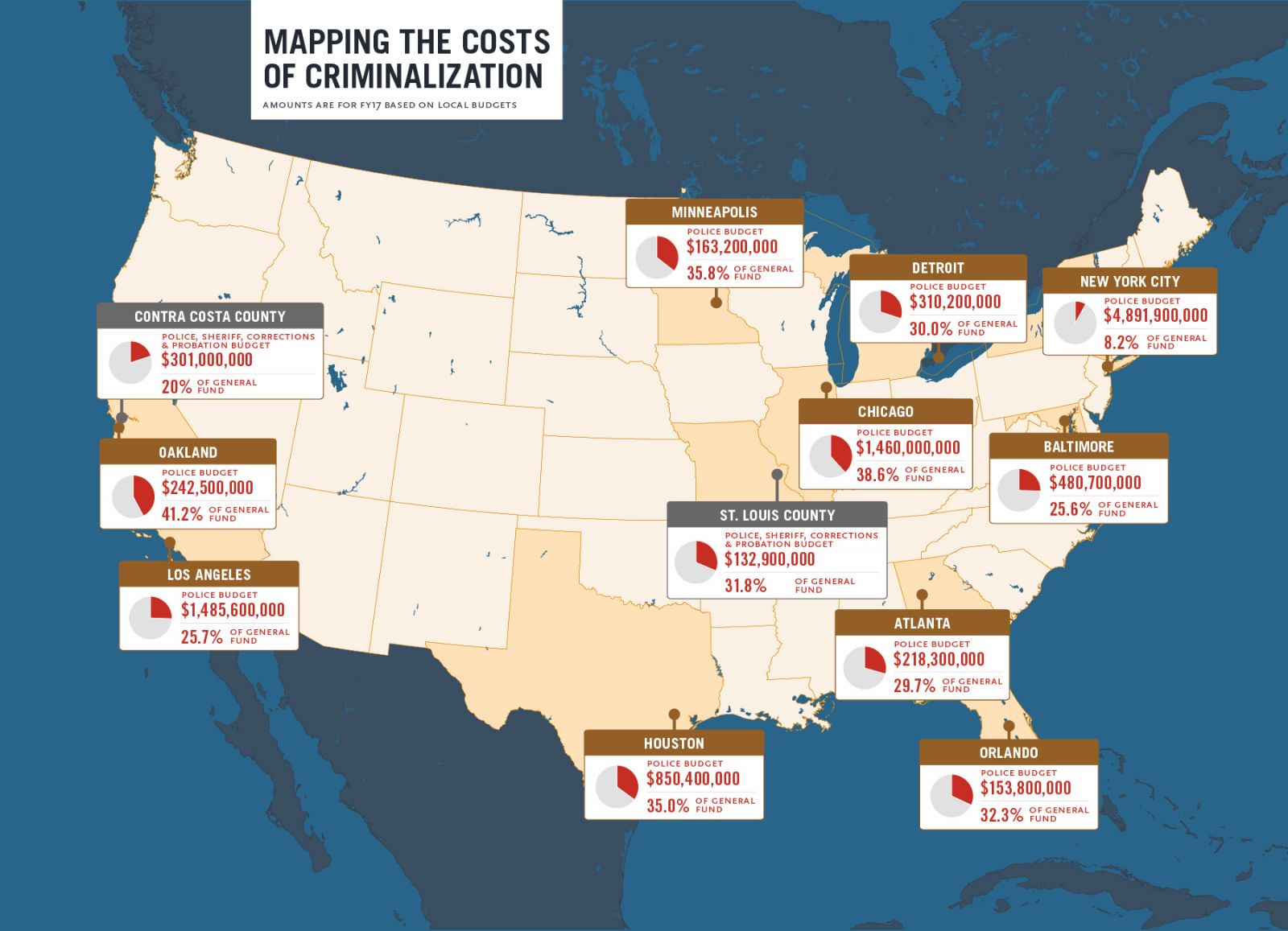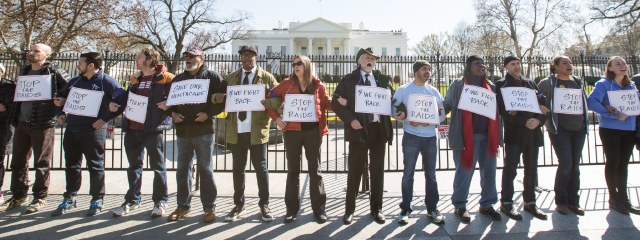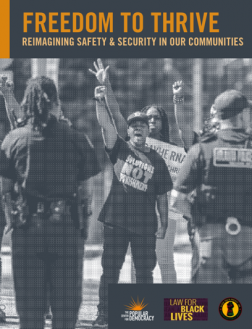07/4/2017 | Combating Discriminatory Policing, Justice Transformation
Freedom to Thrive: Reimagining Safety & Security in Our Communities
Over the last 30 years, at both the national and local levels, governments have dramatically increased their spending on criminalization, policing, and mass incarceration while drastically cutting investments in basic infrastructure and slowing investment in social safety net programs.
Click here to learn more about updated budget numbers for 2020: Police budgets continue to be consistent across diverse geographies and cities in the United States, with up to 20% to 45% of discretionary funds are allocated to the violent system.
EXECUTIVE SUMMARY
The choice to resource punitive systems instead of stabilizing and nourishing ones does notmake communities safer. Instead, study after study shows that a living wage, access to holistic health services and treatment, educational opportunity, and stable housing are far more successful in reducing crime than police or prisons.
This report examines racial disparities, policing landscapes, and budgets in twelve jurisdictions across the country, comparing the city and county spending priorities with those of community organizations and their members. While many community members, supported by research and established best practices, assert that increased spending on police do not make them safer, cities and counties continue to rely overwhelmingly on policing and incarceration spending while under-resourcing less damaging, more fair, and more effective safety initiatives. Each profile also highlights current or prospective campaigns that seek to divest resources away from police and prisons towards communities and their development. We call this the invest/divest framework. We also offer a “Budget 101” to help readers understand some of the terms reflected in this report, and provide a general framework of budget analysis and advocacy.
At the end of the report we highlight the potential impact of participatory budgeting, a popular financial governance strategy which can assist advocates and communities in advancing the invest/divest framework.
Key Findings
- Among the jurisdictions profiled, police spending vastly outpaces expenditures in vital community resources and services, with the highest percentage being 41.2 percent of general fund expenditures in Oakland.
- Among cities profiled, per capita police spending ranges from $381 to as high as $772.
- Consistent community safety priorities emerged across jurisdictions. Most notable among them are demands for mental health services, youth programming, and infrastructure such as transit access and housing.

JOIN THE CONVERSATION ONLINE: #FreedomtoThrive
Media
- Forbes: How Much Do U.S. Cities Spend Every Year On Policing? [Infographic]
- U.S. News & World Report: Cities Spend More and More on Police. Is It Working?
- St. Louis Dispatch: St. Louis spends far too much on policing, far too little on everything else
- City Lab: The Price of Defunding the Police
- Blavity: This Study Found That Major U.S. Cities Spend Millions More On Policing Than On Social Programs
- Next City (Op-ed): Why Rising Police Budgets Aren’t Making Cities Safer
- HuffPost (Op-ed): It’s Time to Reimagine Safety and Security in Our Communities
- East Bay Times (Op-ed): Oakland Spends Far Too Much on Policing
- Univision: ¿Vale la pena quitarle dinero a la policía para apoyar temas como la vivienda, la educación y la salud
- El Diario (Op-ed): Es tiempo que reconsideremos lo que significa la seguridad en nuestras comunidades
- Rewire: Advocates: ‘Blue Lives Matter’ Group Pushes Dangerous Narratives
- Marc Steiner (radio): Freedom To Thrive: Criminalization, Policing, and Mass Incarceration
- Hello Beautiful: Facebook Livestream
- Moorbey blog: The Criminalized Majority
- Minnesota Daily (UMinn Newspaper): Study shows nearly one-third of Minneapolis general fund goes to police
- The New York Times: The High Cost of Policing
- The Crime Report: Should Chicago Spend Money on a Police Academy?













